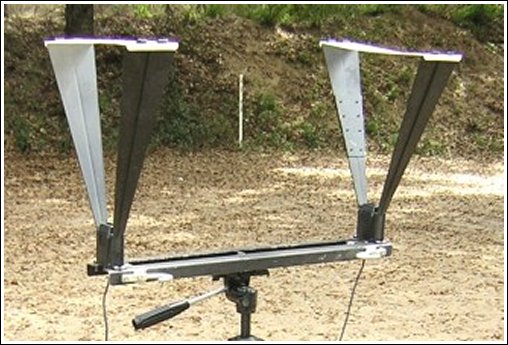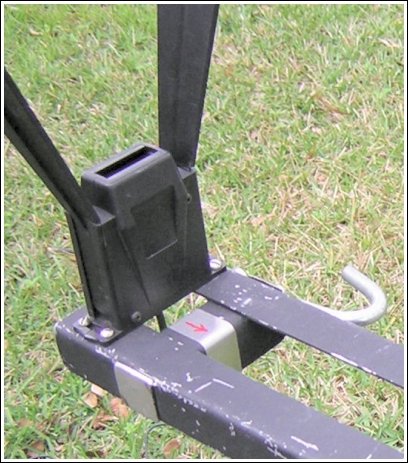Chronograph
(without the problems)
Have you ever wondered exactly how a chronograph works? It's really not that complicated, and it will usually operate just fine, even if you don't understand it. However, they are extremely sensitive devices, and if you learn a few basic facts about them, you'll be able to avoid many of the problems that plague shooters. Here it is in a nutshell. The chronograph contains an extremely high-speed digital clock that starts running the instant you turn the chronograph on. This internal clock generates millions of quick pulses that are needed to calculate the speed of your bullet.

Most photo switches are mounted on an ordinary camera tripod.
It's the job of these photo switches to signal the chronograph when your bullet passes overhead. This is the most problematic part of the system. The first photo switch is activated by the shadow of the bullet passing overhead, and it signals the unit to start counting the clock pulses. Then the second photo switch sees the bullet, and signals the unit to stop counting the pulses. That's a pretty amazing task if you consider how quickly and consistently those photo switches have to react. Once the number of clock pulses is captured, the chronograph can easily calculate and display the exact speed of your bullet.

Notice the red arrow painted near the rear photo switch.
Here are a few tips that will help you experience fewer
frustrations with your chronograph. Note the small red arrow
near the first photo switch. It's a good idea to label your
skyscreen assembly and your start and stop cables, so they will always
get connected properly. Always store your photo switches upside
down (even if they're wrapped up). This keeps dust off those
sensitive photo switches. Any reflective metal surfaces under
your bullet path (near your photo switches) should be painted flat
black. This reduces reflections from your bullets. Some
photo switches may trip with downward reflections from your bullets.
Place your photo switches the same distance from the bench every
time you get setup.
This photo switch has been hit more than once over the
years. These accidents usually happen when shooters share the
same chronograph and the same rifle rest. All it takes is one
shooter to not notice that the rifle rest had been lowered.
That's one reason why I prefer a chronograph where the main unit sits
on the bench, instead of being mounted down range with the photo
switches. I've used my chronograph for testing rifles, pistols,
shotguns, muzzle loaders, pellet guns and even arrows. Using a
chronograph is a very simple task, and it's enjoyable if you stack the
ods in your favor.
